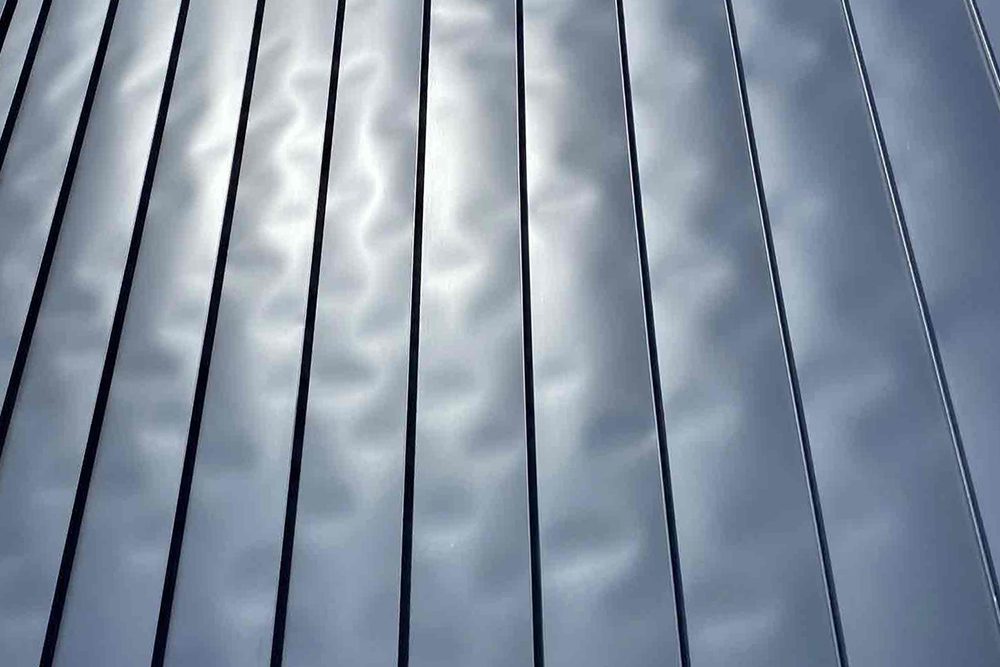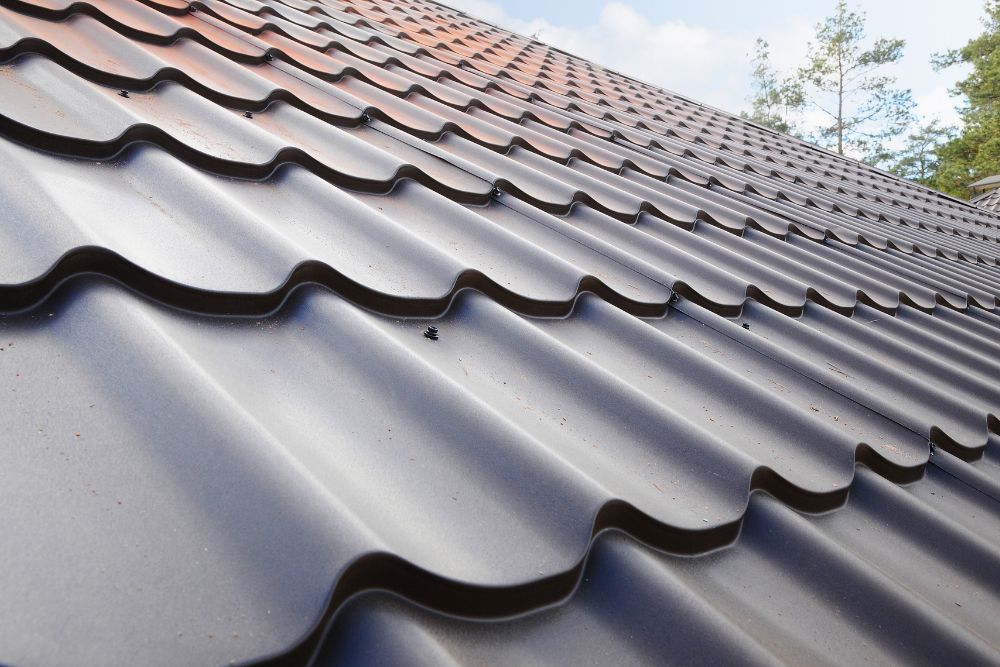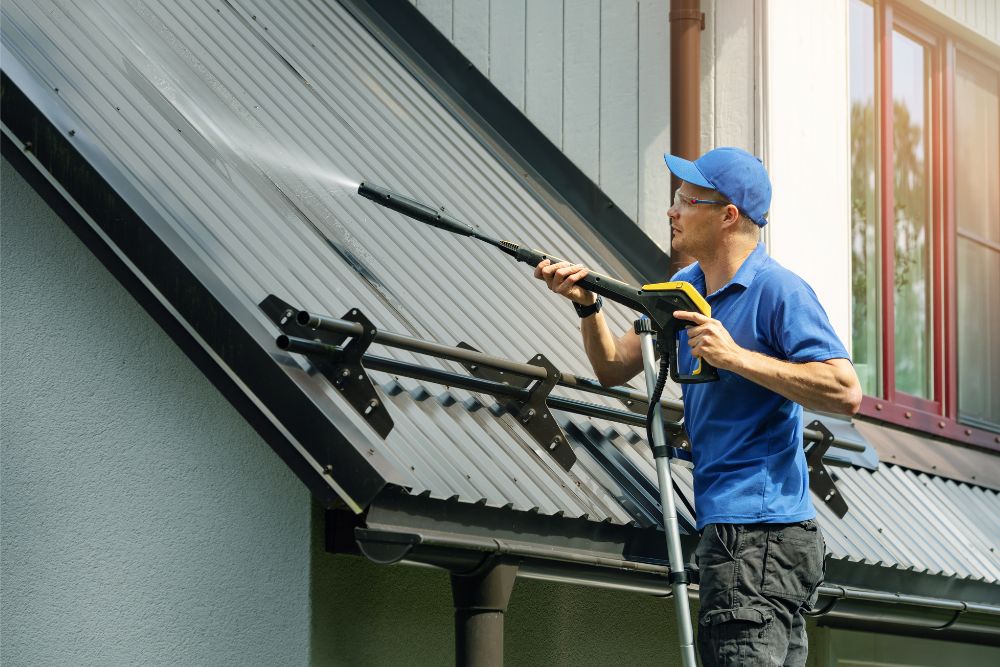Have you ever seen those wavy patterns on metal roofs and wondered what causes them?
Oil canning is a common problem that can affect the look of metal roofing, but do you know why it happens and how to prevent it?
Understanding the reasons behind oil canning and finding effective ways to minimize its impact can greatly improve the lifespan and appearance of your metal roof.
So, let’s dive into the world of oil canning on metal roofs and discover practical solutions to tackle this challenge head-on.
Definition of Oil Canning
Oil canning is a common problem seen in metal roofs where the surface of the metal panels appears wavy or wrinkled. This issue is most noticeable in standing seam roofs due to factors like stress in the metal, material properties, and environmental influences.
While oil canning doesn’t affect the roof’s functionality or structure, it does impact its visual appeal. The visibility of oil canning can be influenced by factors such as panel type, color, gloss level, and width.
To minimize the appearance of oil canning, it’s helpful to use heavier gauge metal, incorporate stiffening ribs or striations, and follow proper installation practices. Understanding the definition of oil canning on metal roofs is important for managing this aesthetic concern and ensuring the overall quality of the roofing system.
Causes of Oil Canning
You might be curious about what causes oil canning on metal roofs. Things like misaligned metal roofs and differences in material thickness contribute to this problem. It’s important to understand these causes so you can address them properly and make sure your metal roofing system is installed correctly.
Metal Roof Misalignment
Misaligned metal roofs can cause visible waves or wrinkles on the panels, which is known as oil canning. This happens because the misalignment creates uneven stress on the fastening points, leading to the appearance of oil canning. During installation, if the roof sub-structure deviates, it can cause excessive twisting of the panels, making the oil canning effect worse.
Problems like over-driving fasteners or movement in the underlying structure can also contribute to oil canning on metal roofs. To prevent oil canning due to misalignment, it’s important to use proper installation techniques that focus on aligning the panels correctly and securely fastening them.
Ensuring proper alignment and fastening of the panels is crucial in preventing misalignment-related oil canning.
Material Thickness Variations
Misaligned metal roofs can cause visible waves or wrinkles on the panels, known as oil canning. Another factor that contributes to this issue is variations in the thickness of the metal used for standing seam or flat metal panels. When the metal panels have uneven thickness, it can result in visible distortions on the surface of the roof or wall.
Thicker gauge metal panels are less likely to experience oil canning because they’ve increased rigidity. Proper handling and storage of materials are important in preventing thickness issues that can lead to oil canning. It’s crucial to ensure a consistent thickness throughout the metal panels to maintain the visual appeal and structural integrity of the roof or wall.
Minimizing Oil Canning Effects
To minimize the visible effects of oil canning on metal roofs, there are a few things to keep in mind. First, consider the profile of the panels you choose. Look for panels with striations, as these can help reduce the visibility of oil canning. It’s also a good idea to opt for thicker gauge materials, as they tend to be more resistant to oil canning.
Another important factor is the installation process. Hiring skilled roofing installers who are experienced with metal roofs can make a big difference in minimizing oil canning. They’ll know the proper fastening techniques to use, which can help reduce the risk of oil canning.
In addition to panel profile and installation, there are a couple of other strategies you can employ. Choosing finishes that are low gloss or textured can help hide the appearance of oil canning. Using backer rods, which are placed behind the panels during installation, can also be effective in reducing oil canning.
Lastly, consider the width of the panels you use. Narrower panel widths can help minimize the visibility of oil canning.
Panel Profile Considerations
To reduce the effects of oil canning on metal roofs, consider choosing corrugated panels instead of flat ones. Corrugated panels are more durable and improve the overall look of the roof.
When selecting panel profiles, keep the following factors in mind:
- Include Stiffening Ribs and Striations: These design elements help decrease the visibility of oil canning.
- Choose Narrower Panels: Narrow panels are less likely to show the cosmetic issue of oil canning.
- Opt for Lighter Colored Panels: Lighter colors can help hide and minimize the appearance of oil canning.
- Select Matte Finishes: Matte finishes also help reduce the visibility of oil canning.
Proper Fastening Techniques
Properly securing metal panels is crucial for minimizing the visibility of oil canning on roofs. To achieve this, make sure to space the fasteners according to the manufacturer’s recommendations and apply the correct amount of torque to avoid over-tightening.
Placing the fasteners consistently along the panels also helps reduce the effects of oil canning. Incorrect installation of fasteners can lead to increased visibility of oil canning, which can negatively impact the appearance of the roof.
Product Selection Considerations
Consider selecting thicker metal panels for your roof to minimize the visibility of oil canning. When choosing products for your metal roof, keep the following considerations in mind:
- Choose finishes with a low gloss level to reduce the appearance of oil canning.
- Use backer rods and consider narrower panel widths to help mitigate the effects of oil canning.
- Look for textured finishes on metal panels, as they can also help minimize the visibility of oil canning.
- Make sure the installation is done by experienced metal roofing installers to effectively address oil canning issues.
Installation Practices to Reduce Oil Canning
To reduce the occurrence of oil canning when installing metal roofs, it’s important to properly support and align the panels. This helps maintain the roof’s structural integrity and minimizes oil canning effects. Follow the installation procedures recommended by the manufacturer to prevent oil canning issues.
Using backer rods under the panels can provide additional support and help reduce waviness and potential oil canning effects. Incorporating stiffening ribs or striations in the panel systems can also distribute stress more evenly, reducing the likelihood of oil canning.
Before installing the metal panels, make sure the roof deck is level, plumb, and free of imperfections to prevent oil canning. During installation, monitor for any signs of oil canning so that you can take immediate action to address and fix any issues, ensuring a smoother and more visually appealing finish.
Solutions for Managing Oil Canning
To effectively manage oil canning on metal roofs, incorporating striations in the metal panels can significantly reduce its visibility. These flat, narrow indentations on the metal surface help break up the appearance of oil canning, making it less visible.
Here are four additional solutions to help minimize oil canning on your metal roofing:
- Choose a thicker metal: Using thicker metal for your roofing panels increases rigidity, which can help minimize the effects of oil canning.
- Opt for narrower panel widths: Narrower panel widths distribute stress more evenly across the roof, reducing the likelihood of oil canning.
- Select low-gloss finishes: Low-gloss or textured finishes can help hide the appearance of oil canning by reducing the amount of light reflected off the surface.
- Install backer rods: By placing backer rods beneath the metal panels, you can provide additional support and minimize the chances of oil canning becoming visible.
Conclusion
In conclusion, oil canning on metal roofs is a common problem caused by stress, thermal expansion, and improper handling.
While there are some ways to minimize oil canning, such as adding striations and using thicker metal, it’s difficult to completely eliminate it once it happens.
By choosing the right materials, hiring experienced installers, and following proper installation practices, the effects of oil canning can be effectively managed.



